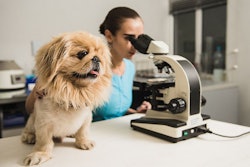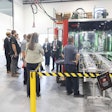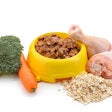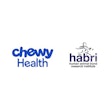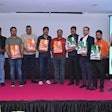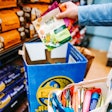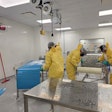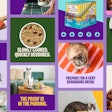Printpack has partnered with TIPA Compostable Packaging and tech-pioneer Digimarc Corporation on a successful proof-of-principal of new sortation technology for compostable packaging.
The trio have developed the first digital watermark for compostable packaging which acts as an imperceptible, machine-readable code that allows the package to be scanned by consumers to instruct and incentivize disposal in the proper bin. The technology further enables compost operators to scan and sort certified compostable packaging with food and organic waste.
The technology is being explored and would expand consumer access to composting. This would aid in reducing landfill waste and the accompanying methane, a greenhouse gas 28-36 times[1] more potent than carbon dioxide. Currently over half of the food waste in the US ends up in a landfill, and the US is the third largest global emitter of methane gas[2]. By signing the Methane Pledge[3] at COP26, the US has committed to cut 30% of methane emissions by 2030. Half of that (15%) could be immediately met simply by assuring food waste along with other bio-waste is not disposed of in a landfill, and instead treated via composting. Compostable packaging encourages organic recycling of discarded food products and diverts waste out of landfills and into composting sites where the package and the organic waste inside it decompose into healthy compost. Compost not only supports the fertility of soil but also captures carbon, helping further reduce climate change.
“Cutting methane is the strongest lever we have to slow climate change over the next 25 years and complements necessary efforts to reduce carbon dioxide," says Inger Andersen, executive director of UNEP.
Successfully automating sortation expands consumer access to composting, (currently at 4% in the US[4]) and enables consumers to directly contribute to the reduction of global warming by responsibly diverting their organic waste and compostable packaging to a compost operator. By making sortation simpler and more effective, TIPA, Printpack and Digimarc seek to demonstrate the mechanisms for infrastructure to scale to bring composting access to every household in America.
The first milestone is to demonstrate the ability to identify the compostable packaging among mixed food and organic waste, while non-compostable packaging is extracted for proper disposal. The clean stream of organic waste and certified compostable packaging can then be properly processed to generate healthy, vibrant,and nutrient rich soils to support regenerative agriculture.
The partners report that the technology passed the first step, demonstrating that the watermark is detected when compostable packaging is stationary whether it is presented as clean and flat, clean and crumpled, or heavily contaminated and crumpled.
The next stage of development will seek to evaluate the performance, while in-motion, and will simulate the mixed organic materials moving on a sorting conveyor belt. The team is currently reaching out to machine providers to identify interested partners to participate in development. Further development of picking apertures and diversion mechanisms will be needed before the platform is ready for the next milestone of trialing on commercial equipment.
TIPA, Printpack and Digimarc are excited to take the first step in developing this new sortation technology, which seeks to serve the needs of consumers and compost operators. Consumers can scan the package and receive sortation instructions per material, alleviating consumer confusion regarding responsible disposal. Composters can utilize the technology to enhance their sorting capabilities and mitigate the possibility of look-alike packaging entering their process.
Gary Robinson, director of Public Affairs at TIPA, said “This is the first time we have seen this technology applied to compostable packaging, and we are extremely excited to see its potential impact. Brands and consumers are seeking packaging innovations that deliver solutions to their lifestyle, while helping the environment. TIPA has taken great measures to develop compelling technologies that deliver the products consumers want. Certified compostable packaging provides a responsible end-of-life, and composting our food waste is something you can personally do to slow global warming.”
Emily Stolarcyk, global sustainability leader for Digimarc, said “We are excited about what this partnership has achieved so far and what is to come. This pilot further demonstrates the variety of solutions that digital watermarking can provide for circular economies. Similar to what Digimarc is doing for plastic recycling as part of the Digital Watermarks Initiative HolyGrail 2.0 in Europe, our goal is to increase awareness and access to alternatives that improve waste management across the value chain.
Alan McDowall, Sr. product stewardship engineer of Printpack said, “New technologies mean there are numerous packaging materials on offer that move us towards a sustainable, circular economy. Through this new digital watermark technology, we hope to play an active part in developing the infrastructure innovations that will remove roadblocks, create wider acceptance, and make it simpler than ever to switch to these types of packaging.”



